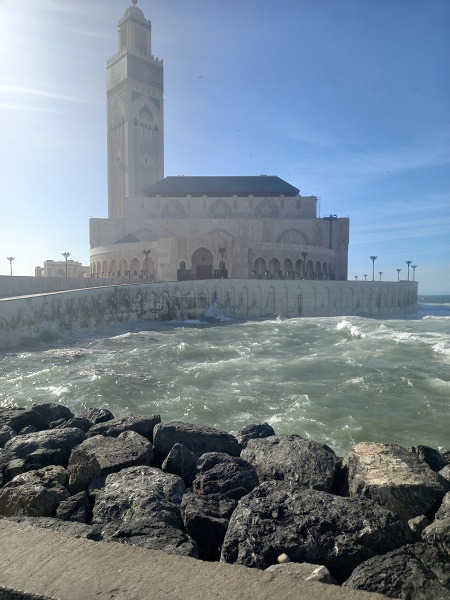When I used to teach maths to my teacher trainees I used the marvels of tessellation that are Islamic decorative pieces to introduce the subject the my students. There are so many parallels between art and maths that people rarely see, and of course tessellation is a key part of other things that I love, such as quilt patterns.
I have long been fascinated by how these patterns are made, and the history of their design, so my trip yesterday, to the Hassan 2nd Mosque here in Casablanca was brilliant for having some of those answered. The mosque is the third largest in the world, and the largest in Africa, and it was built in the 1990s. It took 6 years, and over 12000 craftspeople were involved. The scale of the place is incredible, 25,000 people can worship inside at a time, the mosque covers 2 acres out of a total 9 acres site, and underneath the plaza there is parking for 1000 cars!

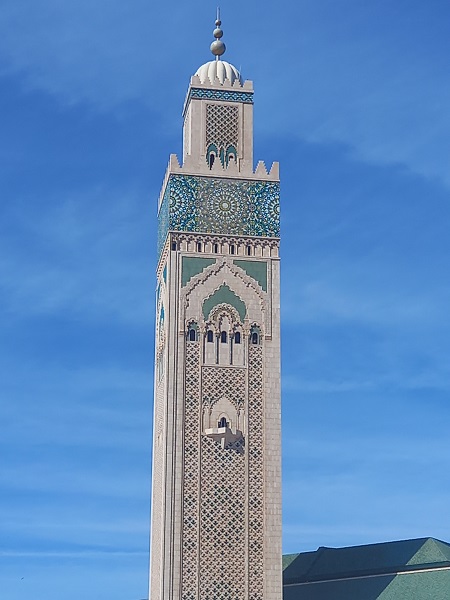
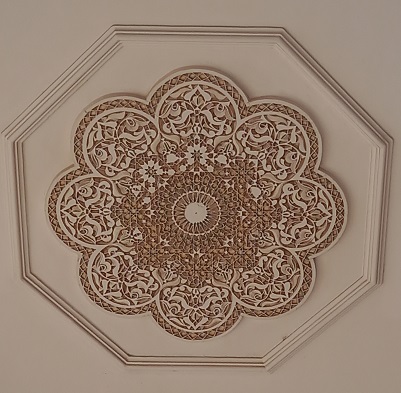


It is one of the few mosques that can be visited by non-Muslims, I booked my tour with Get Your Guide, and I had a great time. I don’t usually book tours, as I am too busy photographing doors to keep up 😉 but you can only go in as part of a tour group. I am glad I did though as the guide was fantastic, and and I had a nice chat with a Muslim family from London who were telling me about their local mosques, and other places they have visited in Egypt and Iran.
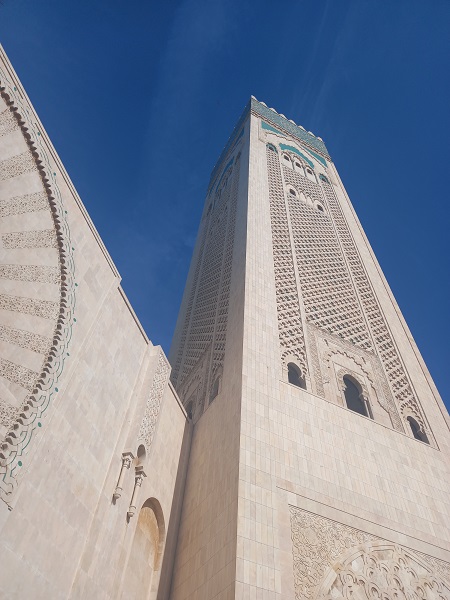

One of the really interesting things for me about the visit was that, unlike the cathedrals that I visited in Spain, we know who built this, who these amazing craftspeople were. The complex has a training facility, and is still teaching people these skills. Obviously the place needs to be maintained, but also it is great to know that there is still the opportunity to train in these wonderful arts.


If you want to know more about the history of the place then read this blog post by The Whole World or Nothing. I have been following James and Sarah on Instagram for a while now, and they have a really useful website with so many great destinations covered. They have given me good tips of where to eat in my next destination, Tangier.



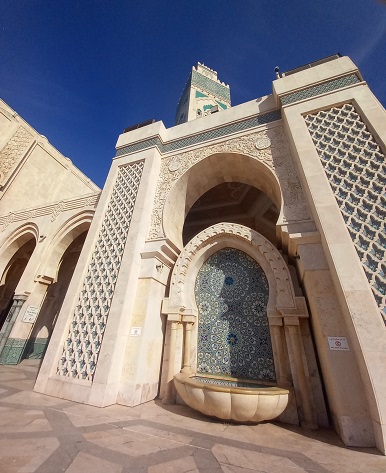

The tour starts with a small exhibition about the crafts, which is great. The tessellation technique used on the panels is known as zellige (or zellij) and there is a really useful Wikipedia page that tells you more about the technique. I have seen so many of these types of mosaic in Spain, and I really wanted to learn more about it here. There are going to be other amazing examples in Fes as well, which I am excited to see.

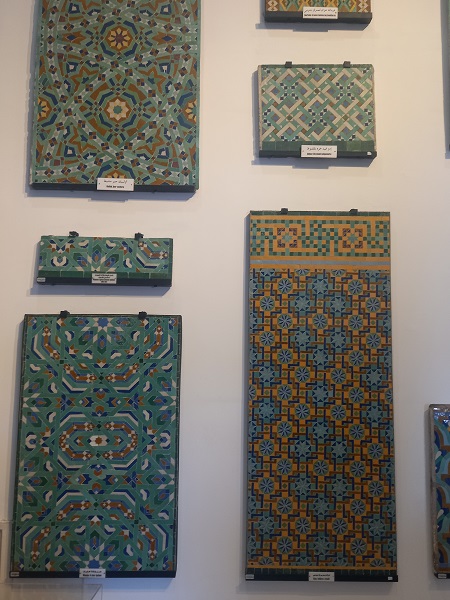






Inside the prayer hall is just breath taking. The skills of the mosaic makers, wood carvers and gypsum craftspeople combine together into the most stunning works or art. The tour also answered some of my other questions about the plaster work. I have seen many examples and always wondered whether is was carved or not. It is moulded, from wet gypsum, and then painted. The ceilings are made of cedar wood and are carved and painted.


Most of the materials come from Morocco, with the exception of some of the white marble from Italy and the crystal chandeliers, which are from Murano, the glass making island I visited with Mum last year as part of our Venice trip.






There are the most stunning brass decorations and lamps everywhere. I have a few small ones Moroccan lamps at home, and love the patterns they give with candles in.



The second half of the tour takes you downstairs to the washing rooms, past some amazing doors.



As well as the beautiful tiles and pillars, there are all these flower shaped fountains for the ritual washing before prayer. The water comes from the centre of the flowers and falls into the drains below.


The mosque cost $800 million, and a third of this was paid for by the king, the rest by public donation and subscription. It is a truly amazing place, and such a testament to the skills of the people who made it and look after it. The tours finance the running costs of the place, so it is self supporting now.
Whenever I visit a religious monument, be it cathedral, or mosque, and look at the amazing work inside, I can’t help thinking about the costs of all that gold, marble, and labour, and wonder about the needs of the people that live in the communities around these wonderful places.
Although I love visiting them, and truly appreciate them, they represent an investment that is often not reflected in the practical lives of the people who live near them. You could argue that an investment in a spiritual place is just as important to people as investment in housing, education or healthcare. Or that places like this, and all of the cathedrals I recently visited, bring tourists to the place, and that benefits the local economy. It is always a difficult question to answer.
It really is an exceptionally beautiful place though. The mosque is partly built over the sea, and it was a windy day yesterday so there were really high waves. It was lovely to see all the children watching them, from the walkways near the mosque, daring each other to go nearer the wall and get splashed.
I have a couple more days here, and then it is my first trip on a Moroccan train. If the bus experience is anything to go by, it will be a very comfortable and efficient service. It is just a short trip this time of a couple of hours, but I am very excited!
Until next time, have fun, take care, stay safe and thanks for visiting.

